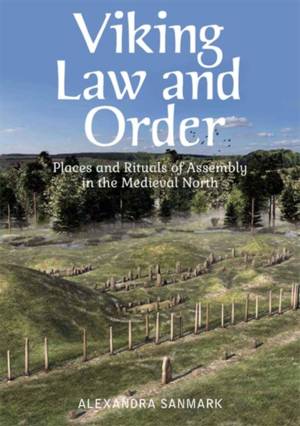
- Afhalen na 1 uur in een winkel met voorraad
- Gratis thuislevering in België vanaf € 30
- Ruim aanbod met 7 miljoen producten
- Afhalen na 1 uur in een winkel met voorraad
- Gratis thuislevering in België vanaf € 30
- Ruim aanbod met 7 miljoen producten
Viking Law and Order
Places and Rituals of Assembly in the Medieval North
Alexandra SanmarkOmschrijving
Until very recently Viking and Norse assembly sites were essentially unknown, apart from a few select sites, such as Thingvellir in Iceland. The Vikings are well-known for their violence and pillage, but they also had a well-organised system for political decision-making, legal cases and conflict resolution. Using archaeological evidence, written sources and place-names, this book provides a comprehensive analysis of their legal system and assembly sites, showing that this formed an integral part of Norse culture and identity, to the extent that the assembly institution was brought to all Norse settlements.
Sites are analysed through surveys and case studies across Scandinavia, Scotland and the North Atlantic region. The author moves the view of assembly sites away from a functional one to an understanding of the symbolic meaning of these highly ritualised sites, and shows how they were constructed to signify power through monuments and natural features. This original and stimulating study is set not only in the context of the Viking and Norse periods, but also in the wider continental histories of place, assembly and the rhetoric of power.
Specificaties
Betrokkenen
- Auteur(s):
- Uitgeverij:
Inhoud
- Aantal bladzijden:
- 320
- Taal:
- Engels
Eigenschappen
- Productcode (EAN):
- 9781474402293
- Verschijningsdatum:
- 18/07/2017
- Uitvoering:
- Hardcover
- Formaat:
- Genaaid
- Afmetingen:
- 173 mm x 246 mm
- Gewicht:
- 861 g

Alleen bij Standaard Boekhandel
Beoordelingen
We publiceren alleen reviews die voldoen aan de voorwaarden voor reviews. Bekijk onze voorwaarden voor reviews.









